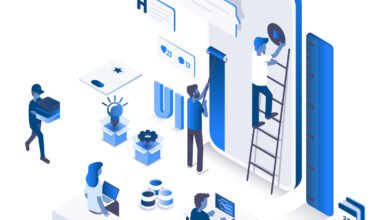Introduction
The demand for mobile apps is growing rapidly, making mobile app development an attractive career choice. Whether you are a beginner or an experienced developer looking to expand your skills, knowing what to learn is essential. Here’s a step-by-step guide to help you understand the key concepts, tools, and technologies required for mobile app development.
1. Choose the Right Platform: Android or iOS
Before diving into development, decide whether you want to build apps for Android, iOS, or both. Each platform has its own programming languages, development tools, and guidelines. Aspirant Soft Solutions provide Best Hybrid Mobile App Development Company in Hyderabad, India. Hire Our Hybrid Mobile App Developers now to deliver businesses of all sizes.
- Android Development: Uses Java or Kotlin with Android Studio as the primary IDE.
- iOS Development: Uses Swift or Objective-C with Xcode as the primary IDE.
- Cross-Platform Development: Uses frameworks like Flutter, React Native, or Xamarin to develop apps for both platforms simultaneously.
2. Learn Programming Languages
To develop mobile applications, you need to learn a programming language.
- Java: The traditional language for Android development, widely used and supported.
- Kotlin: The modern and official language for Android, offering concise syntax and better performance.
- Swift: The primary language for iOS development, known for its safety and performance.
- Dart: Used in Flutter for cross-platform development.
- JavaScript: Essential for React Native development.
- C#: Used for Xamarin, a Microsoft-supported framework for cross-platform apps.
3. Understand UI/UX Design Principles
A well-designed app should have an intuitive and engaging user experience. Learn about:
- Material Design (for Android apps)
- Human Interface Guidelines (for iOS apps)
- Wireframing and prototyping tools like Figma or Adobe XD
- User behavior analysis to enhance user engagement
4. Get Familiar with Development Tools
- Android Studio: The official IDE for Android development.
- Xcode: Apple’s official development environment for iOS apps.
- Visual Studio Code: A popular editor for cross-platform development.
- Flutter SDK: For building cross-platform mobile apps.
- React Native CLI: A command-line interface for React Native development.
5. Work with Databases and APIs
Most apps require data storage and communication with external services.
- SQLite and Room Database: For local storage in Android apps.
- Core Data: The local database for iOS apps.
- Firebase: A cloud-based backend solution offering authentication, real-time database, and cloud storage.
- RESTful APIs and GraphQL: For retrieving and sending data between the app and server.
- PostgreSQL and MySQL: Popular relational database systems.
6. Master Backend Development (Optional but Useful)
Although mobile developers focus on the front end, knowing backend development helps in building full-fledged applications.
- Node.js, Django, or Flask: For developing APIs and server-side logic.
- Cloud Platforms like AWS, Google Cloud, or Firebase: For hosting and scaling backend services.
- Authentication mechanisms: Using OAuth, JWT, or Firebase Authentication.
7. Version Control and Collaboration Tools
- Git and GitHub/GitLab/Bitbucket: Essential for code management and collaboration. Aspirant Soft Solutions provide Best Hybrid Mobile App Development Company in Hyderabad, India. Hire Our Hybrid Mobile App Developers now to deliver businesses of all sizes.
- Agile methodologies and tools like Jira, Trello, or Asana: Used for project management and team collaboration.
8. Testing and Debugging
Ensure your app is bug-free and runs smoothly across devices.
- Android Emulator and iOS Simulator: To test apps on different screen sizes.
- Unit Testing and UI Testing: Using JUnit, Espresso (Android), and XCTest (iOS).
- Debugging Tools: Using Android Studio’s and Xcode’s built-in debugging features.
- Crash Reporting Tools: Like Firebase Crashlytics or Sentry.
9. Publishing and Monetization
Once your app is complete, learn how to publish it and monetize your efforts.
- Google Play Console and Apple App Store: Platforms to publish Android and iOS apps.
- Ad Networks: Such as Google AdMob or Facebook Audience Network for monetization.
- In-App Purchases and Subscriptions: To generate revenue from premium features.
- App Store Optimization (ASO): To improve app visibility and downloads.
10. Stay Updated and Keep Learning
The mobile development landscape is constantly evolving, so staying updated with the latest trends and technologies is crucial.
- Follow developer blogs and YouTube channels.
- Participate in coding challenges and hackathons.
- Join developer communities on GitHub, Stack Overflow, and Reddit.
- Take online courses from platforms like Udemy, Coursera, or Codecademy.
Conclusion
This article in the toastul must have given you clear idea about Becoming a successful mobile app developer requires mastering multiple skills, from programming languages and UI/UX design to backend development and testing. Whether you choose native or cross-platform development, continuous learning and hands-on experience will help you build high-quality apps. Start small, practice regularly, and keep improving your skills to become a proficient mobile developer.



